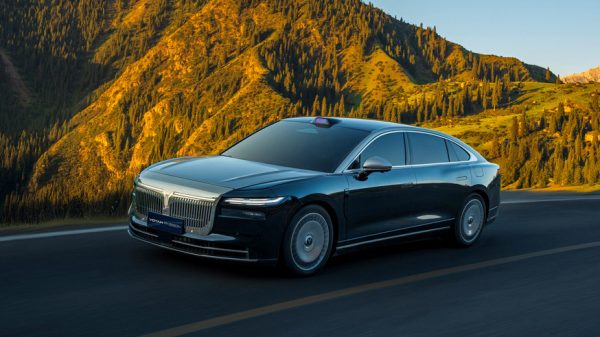
Can Trump win again in 2020?
US Election Article Bar
On first reading, the data looked dire for Donald Trump ahead of the first 2020 presidential debate.
Poll after poll from not only the previous few days but weeks and months showed the president trailing his Democrat rival Joe Biden nationally.
In the final days of September ahead of the debate, around 50 per cent of Americans planned to vote for Biden in November, compared to 43 per cent siding with Trump, according to the Telegraph’s live US polls tracker — one of the biggest leads at this point in a presidential campaign.
In fact no eventual winner of a US presidential election has gone into the first debate trailing their main challenger in national polling as much as Trump did on the eve of the TV head to heads.
How Trump compares to previous winners before debate
Post-debate comebacks are not impossible. Barack Obama went into his first debate in 2008 behind his Republican opponent John McCain only to surge ahead on the back of a strong performance, while Al Gore’s weak showing in the first 2000 election debate helped George W. Bush turn around his campaign.
But moreover, if Trump can hold on to his electoral base — and avoid tanking in the polls even further — re-election is still within the President’s reach.
Key to another unexpected win will be a handful of states where the race is on a knife edge.
A path to victory?
The US’s unique voting system means that a healthy lead in polls or even victory in the popular vote at a national level does not necessarily translate into the presidency, as Hilary Clinton found in 2016.
Presidents are not elected directly by Americans, but through the electoral college, a winner-takes-all system whereby the candidate with the most amount of votes in a state in turn receives a fixed number of electors, allocated on the basis of a state’s population.
There are 538 electoral college votes up for grabs across the US’s 50 states, meaning 270 is needed to win — and examining recent polling averages from forecaster FiveThirtyEight begins to reveal the cracks in Biden’s seemingly impenetrable lead.
Read more: Who won the first election debate?
State polling US Presidential election 2020
It appears the former Vice President can confidently count on around 230 electoral college votes from Democratic bastions like California, which delivers 55 votes to the electoral college and at the moment sees Biden leading Trump by roughly 62 per cent to 31 per cent.
Biden then looks set to pick up a further 30 or so electoral college votes from states by no means safe but leaning in his direction in local polling, taking him within arm’s reach of the goal of 270. This includes Virginia and Michigan, where he holds a 7 per cent lead over Trump — similar to the gap between them at a national level.
But as one moves down the list of states ranked by Biden’s lead — and into the realms of tinier gaps and more inaccurate polls — it becomes clear that around 128 further electoral votes are locked up in 7 swing states where Biden or Trump leads by less than 2 per cent.
These states , which include Florida, Texas, Ohio, and Iowa, are the key battlegrounds of 2020, and defeat across the board could be enough to prevent Biden reaching the 270 to win the presidency, even with his large national lead.
Of course, though victory for Trump is still possible, Biden has the clear advantage — winning even one or two of the swing states may be enough to deliver him the White House.
Trump, on the other hand, has a much steeper hill to climb, with Telegraph analysis based on polling averages suggesting he needs to win at least four out of seven of the states — and every path to victory for Trump requires winning Texas.
Such close races mean that the major events of the campaign — like the president’s Covid-19 diagnosis and seeming recovery — have the potential to tip the balance either way in these key states.
Read more: Who won the final election debate?
Retaining the base
If Trump is to have any chance of securing a second term it is crucial he retains — and builds on — his voting base from 2016.
In some of the key battleground states Trump flipped the popular vote from the Democrats largely due to his support among white, generally older and less educated, men.
According to data from Pew Research, Trump’s rode to victory in 2016 with the support of more than two thirds (67 per cent) of white men over the age of 50. Among white non-college graduates he picked up 64 per cent of the vote.
It lies in contrast with the support that rallied behind Hillary Clinton, with more than one in five (82 per cent) of non-white women over 50 years of age and 82 per cent of non-white women aged between 18 and 49.
Trump voter base 2016 v Clinton
With the electoral college swinging on the result of a handful of states, the demographic make-up of target voters will play a part.
In Florida — a cornerstone of the swing states which has long been central to electoral success — Trump has an advantage with older voters, if he retains his base from 2016.
It has 4.4 percentage points more eligible voters aged 65 and above than the national average, according to data from the US Census Bureau.
Read more: What are key battleground states, and who is leading in the polls?
Demographics in swing states from 2016 election
The ethnic make-up of Wisconsin and Arizona — both states flipped from the Democrats in 2016 — also plays into Trump’s hands.
Wisconsin has 13.2 percentage points more white residents than the national average, and 6.4 fewer black residents. In Arizona there are 8.1 percentage points fewer black residents than the United States as a whole, and 6.3 more white.





















































Свежие комментарии